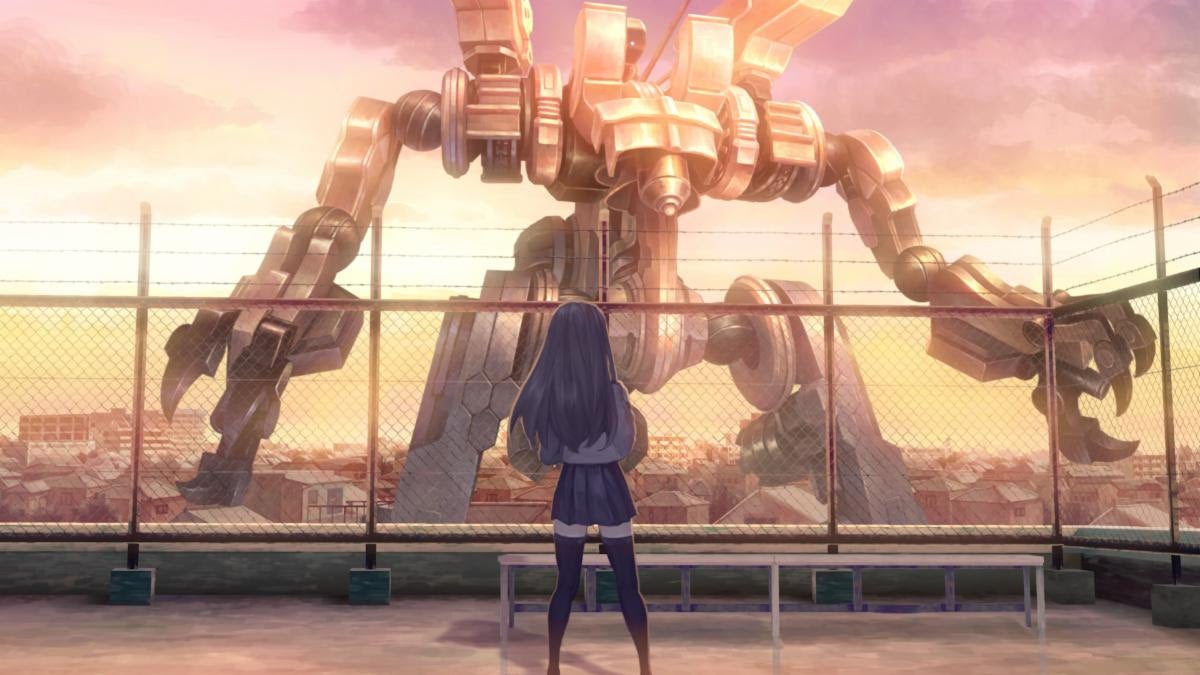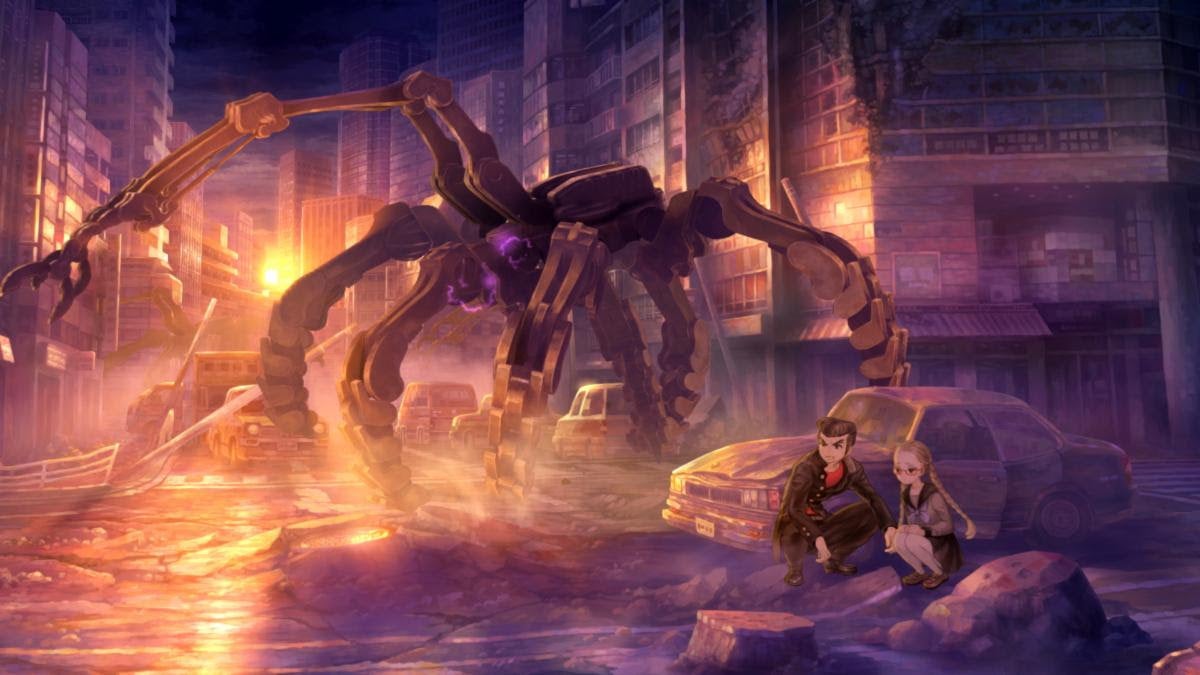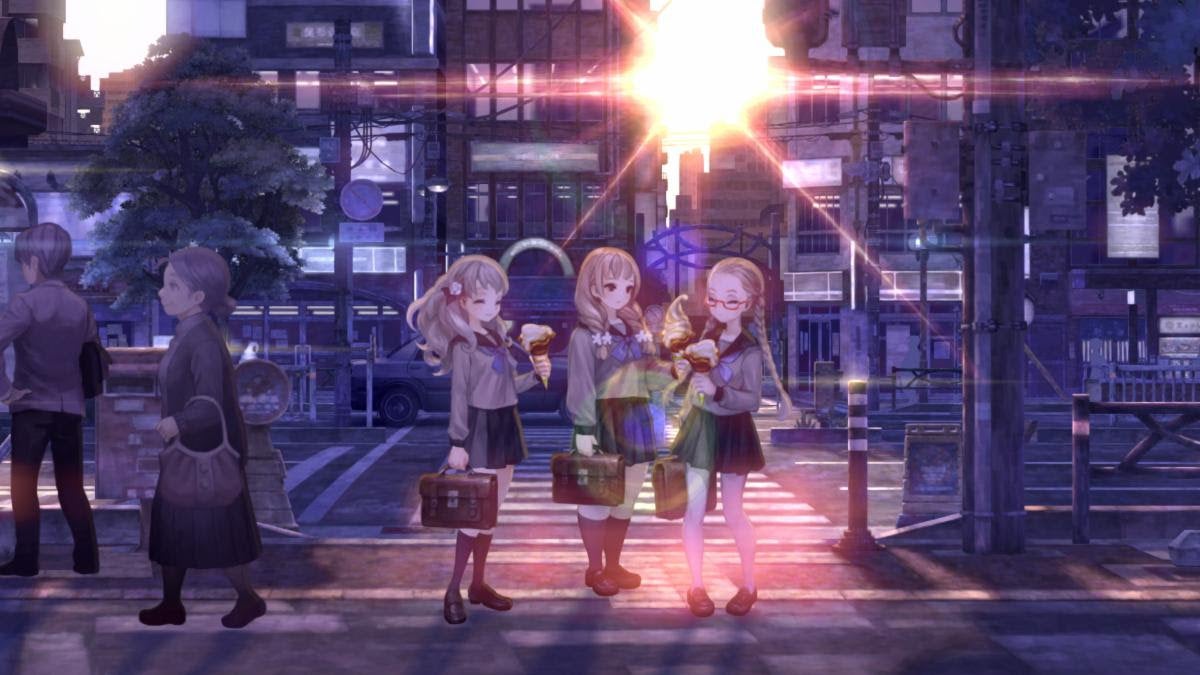And I know I’m not alone. A cursory look at any video game forum, social media site, or Discord server will back me up – I know it. Anyone that’s played 13 Sentinels: Aegis Rim will agree, it’s one of those games that stays with you. It hangs around in your head for hours – days, weeks! – after you’ve finished it, rattling around and instantly becoming nostalgic whenever you think about it. But why? Maybe it’s the perennially dusty classrooms and cosy back alleys in the game that make it feel like it’s been in my memory for years, or maybe it’s the one-two emotional gut punch it manages to pull off at least once per hour of playtime, but 13 Sentinels: Aegis Rim is an all-timer. It’s a game that I’d recommend even to people that don’t usually like text-heavy, story-lead games like this in the same way I’d recommend Neon Genesis Evangelion to people that don’t usually like anime – the transcends its genre (its genres, plural, even) and easily finds a place as one of the most narratively excellent games I’ve ever played. It might sound like a lot, the idea of rotating between 13 different playable characters in one game, each with their own idiosyncrasies, neuroses, and backstories. But the way the game is bread-crumbed out for you – and the delicate choreography between its narrative helixes as you dig deeper into the core story – is one of the most impressive narrative feats I’ve had the pleasure of experiencing. In any form of media. Cloud Atlas, House of Leaves, Disco Elysium, Fight Club, 13 Sentinels; it joins the list. This unassuming visual novel-cum-RTS amalgam would be the last game I’d think to list amongst all my other favourite try-hard innovative form narratives, but here we are. I’m as shocked as you. On a top-down level, the plot is about mysterious creatures – plucked from somewhere between War of the Worlds and Godzilla on the sci-fi scale on behemoth threats – that start attacking the earth. They won’t stop until it’s destroyed. 13 high-school students from a fictionalized version of 1980s Japan are dragged into this futuristic war with their hulking mechas, and you’re constantly told – as is always the way in these things – that the kids are humanity’s last chance. These pilots, and their curious weapons, are the last line of defense. The game, after a pretty linear intro, lets you take the reins; like the story about the Japanese soldier from the 1940s finding out he accidentally fell in love with a boy? Go play as one of those two, see how that spins out. More interested in the amnesiac kid that seems to have been wrenched into a random school as some kind of multi-timeline psy op? Go figure that one out. More interested in the girl who kicks off her very own ET narrative in the opening hours? You know what to do. Given the complexity of the game’s story – multiple protagonists, multiple time periods, multiple timelines – you’re even given a flowchart (yes, really) to keep track of it all. But therein lies the charm, the same way that I’d clap my hands together in glee every time I had to get the tracing paper out to read House of Leaves, or I’d have to rewind my old VHS of Twin Peaks to understand what the hell someone was saying. The savant storytellers at Vanillaware (and the crack team of localisers that got this stunning version ready for the Western market) perfectly match narrative with format in this game; as much as Ken Levine’s team did with BioShock. Probably better, actually. Some of the mechanics can be clunky – internalizing key words and using them on characters to unlock conversation paths isn’t exactly new – but it gives you some direction in what would otherwise be an open sea of potential story branches and endless character interactions. And what a joy it is, getting to know these doomed children and seeing the world through their pessimistic eyes. How wonderful it is to revel in the moments of mundane happiness they manage to eke out of their decaying world. 13 Sentinels reminds me, often, of Mass Effect 2 – of those desperate moments of love or relief when an entire ship’s worth of big personalities is staring down the barrel of a one-way suicide mission. The interplay, the friction, the chemistry, the tension… 13 Sentinels has it all, and manages to pull it off with such maturity and care for its subject matter it’s nearly impossible to believe that it’s from the same studio that made Dragon’s Crown. Is it any surprise that the bulk of the development studio is made up of artists, not engineers and coders? No, not really. Is it a surprise to see a story of such depth and intrigue come from a 2D video game? Again, no. But this is a game that couldn’t have been made by anyone other than Vanillaware – it’s so personal, and draws on experiences that are assumedly so deeply-rooted in the staff’s psyches that it’s impossible to image this game in any other context. It helps that the Switch version of the title looks bloody gorgeous on the OLED Switch, and the more forgettable RTS/action sections of the game have been rebalanced since its PS4 release, too – it helps you smooth over the rougher bits of the package and focus on what you should be focusing on; the exemplary storytelling and the best-in-class 2D art. You can’t just sleepwalk through the combat bits anymore by using overpowered arms; you actually have to think about it. But that’s good, because it makes you feel like you’re living life as a pilot more, and you empathize with the cast more – and that is sometimes necessary, especially when it comes to some of the weaker strands of storytelling. But that’s not to say any of it is bad; when you have 13 main fibers all in one storytelling strand, some of them are bound to be weaker than others. I can’t find any more words to say how important this game is if you like games, stories, and both of them smushed together in achingly beautiful games about life, death and everything in between. After being trapped in a semi-functioning shell with performance issues on PlayStation 4, 13 Sentinels: Aegis Rim is now free to operate on Switch – where the weaker tech is somehow treating the game better – and I implore anyone hungry for one of the best gaming experiences to launch in the last few years to give it a go. Given that 13 Sentinels is the result of a six-year development cycle that started with a Vita version that was eventually scrapped, it’s lovely to see it enjoy such a vibrant homecoming to a handheld device: it’s the definitive version of the game, and it deserves to be played by as many people as possible.


